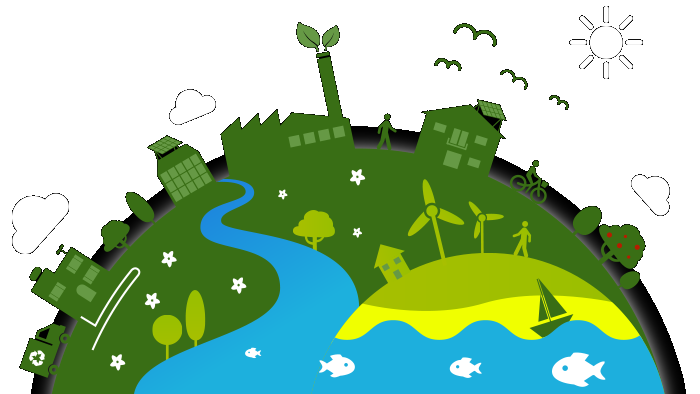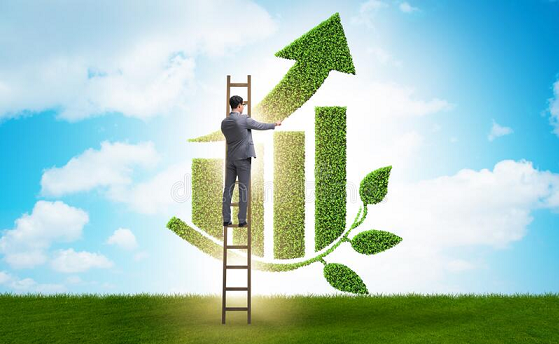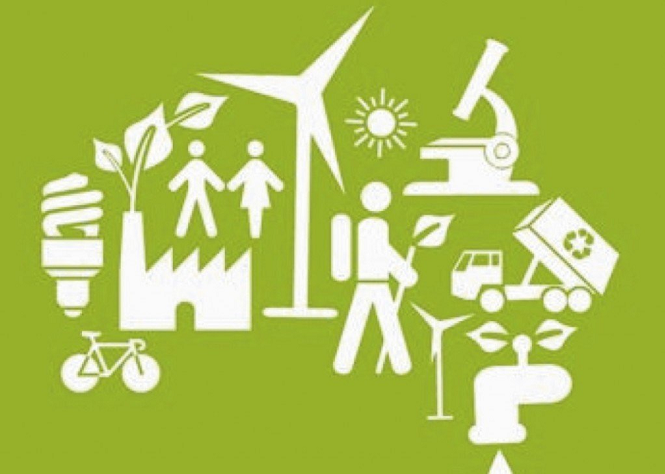Pakistanis with a potential to emerge as a Great Nation
The Pakistani nation has great potential as enthusiastic and patriotic citizens, which it has proven time and time again. We recently surprised the world by successfully fighting COVID-19 and setting a unique example before global humanity as a courageous and unified nation. Pakistan is among the few nations in the world that have managed to timely and effectively control the four phases of a pandemic that has brought advanced and developed states to their knees. It came as a surprise to the Pakistani nation itself that they, as a unified nation, can act to address such a crisis, with all segments of society taking action and changing behaviors in response to the pandemic. When we work together, even small personal actions like physical distancing can make a big difference, helping us overcome huge challenges.
Likewise, Pakistanis, seemingly separated into different segments, have always remained a unified nation whenever the nation faced calamity or natural disaster. When the 2010 floods plunged 20% of the nation underwater, the government was largely absent from action. However, the military services, doctors, housewives, students and many others immediately moved to the affected areas to provide assistance. Of course, many Pakistanis serve to the needy every day, and not just after humanitarian catastrophes.
Some of Pakistan’s first responders don’t bring relief or medical supplies, but inspiring words and campaigns that lift the nation’s spirits. Then there are those Pakistanis who use their rare gifts to benefit the country. The tragically short life of Arfa Karim, the teenage IT genius who provided computer training to the poor, is a shining example.
Remarkably notable are the educational institutes that are committed not only to providing advanced education in modern subjects, but also to developing our students as united, patriotic, and environmentally friendly grownup citizens. Also admirable are those who work under the most difficult conditions, yet still perform extraordinary deeds. Take officials and doctors, many of whom are very underpaid and overworked, and work in dangerous environments. One of Pakistan’s conundrums is how it manages to “fumble” despite its myriad of problems. The answer can be found in its people, who hold the country together. They are undoubtedly driven by patriotism, which runs deep despite the nation’s seeming divisions.
Global Environmental Challenges
Toxins
Radioactive materials, pesticides, herbicides, fungicides, nematocides―all of these man-made products kill or harm life. Heavy use of pesticides, herbicides, fungicides and other toxins will continue to have highly deleterious effects on the health and well-being of people and ecosystems. Thereby their use should be with care and in limited amounts. Dangerous radioactive materials last for millennia and warrant great wisdom in their production, use, storage, and disposal.
Our Dying Oceans
Overfishing has decimated most fisheries and the oceans are now devoid of over 95% of its larger predatory fish, such as sharks, Bluefin tuna, and billfish. Coral reefs are degrading almost everywhere they occur due to warming and acidifying (caused by more carbon dioxide in the atmosphere) seas, overfishing, and sediment- and toxin-laden runoff from the land. And the tons and tons of discarded plastic that ends up in the ocean kills and sickens marine life up and down the food chain. As this plastic breaks down the resulting micropellets will continue to cause lasting harm in ecosystems.
What can be done? Humanity needs an international effort to regulate and enforce sustainable fisheries, as well as a system of coastal and offshore marine protected areas that protect at least a quarter of the ocean.
Sources of ocean plastic, from plastic shopping bags and flip flops in river runoff to industrial pellets and toothbrushes dumped offshore, need to be cut off, and truly biodegradable plastics (not just ones that break into smaller pieces) need to be widely adopted. To paraphrase the Inhabitat mission statement, the imperative of ‘good design’ today is not only about colour, style or trends – but instead about thoughtfully considering the user, the experience, the social context and the impact of a designed object, system, or interaction on the surrounding environment, and, increasingly, biosphere stewardship.
The Haemorrhaging of Biodiversity
Our species’ activity within the last century is responsible for rapidly diminishing the diversity of life forms on this planet. Each species lost is a storehouse of environmental knowledge selected for over millions of years. The exploding sciences of biomimicry, bioengineering, and genetic manipulation highlight the enormous potential a single species may have in helping humanity create a healthier, more sustainable interaction with our environment through improvements to medicines, food production, nutrition, technologies, and resilient ecosystems.
A conservative estimate is that well over a hundred species a day are going extinct, with the rate of disappearing species accelerating as natural habitats shrink, fragment, and degrade and commercial exploitation of vulnerable species escalates. The loss of species is irreversible and the loss of old-growth natural habitats irretrievable within centuries. The fewer the species remaining on this planet, the more tenuous our own existence.
EO Wilson rightly warns that our destruction of the Earth’s biodiversity will be the thing that future generations will least forgive us for.
Degrading the Ozone Layer
Without the protective ozone layer high above in the stratosphere we would literally fry from the sun’s ultraviolet radiation. Certain industrial compounds, such as organohalogens (the refrigerant Freon is an example), break down ozone in the stratosphere at very high rates for long periods of time and greatly reduce the ozone’s ability to protect surface life from UV radiation. The US and China recently agreed to work to diminish the production and use of these compounds, which is a great step forward in wise biosphere stewardship.
Changing Climates
Humanity has released sufficient quantities of greenhouse gases into the atmosphere over the last century that we are now starting to feel the effects of an inevitably warmer world. Pronounced droughts, floods, wildfires, and storms are expected more frequently, rising seas will inundate coastlines, and climate patterns will be reconfigured around the planet. Agricultural zones will shift and water may become scarce in many areas prompting mass migrations, great social upheaval, collapsing economies, and wars. Humanity is already committed to a great deal of change in our global climate, but reducing greenhouse gas production and creating more efficient technologies and production systems now will benefit future generations and help us back away from thresholds of irreversibly harsh conditions.
Food
The meeting emphasised the effects of modern food production processes on the environment and human health, and discussed the best ways to provide food of the required quality, in sufficient quantities and in a sustainable way. The many advances made over the past century in increasing the food supply have been achieved by the introduction of new practices and added substances, resulting in a series of effects, some of which are detrimental to the environment and human health. Contamination of air, soil and water from a variety of sources have contributed to these problems. Of particular importance are the effects on human health, the environment and a variety of ecological systems.
This is among the prime objectives of Green Living Pakistan to educate future leaders at the nexus of agriculture, food, and environmental science and policy, and empower them by providing rigorous training, an ethic of social change, as intellectual community generating visions and models of alternative systems.
Green Lessons Learned from ‘COVID-19’
COVID-19 has changed the world, as, all countries and territories have registered corona cases, and the entire world is buzzing with uncertainty and fear. Undoubtedly, there are huge damaging impacts of Coronavirus on the world markets and purchasing abilities of people. No doubt, there are devastating effects of Coronavirus on the individuals’ and collective economies including damaging impacts on the states’ economies, stock markets, oil prices, travel industries, manufacturing industries and people’s buying power. Moreover, there are increasing physical and mental impacts of the pandemic on the vast majority of the world population and experts worry that people all over the world may be experiencing an increasing number of mental health issues.
Regardless of the crucial effects of COVID-19 on the world population, there are certain advantages of the pandemic which have never been seen in the recent past. The most significant impact has been witnessed on the ever-deteriorating environment. Satellite images show the pollution levels have enormously decreased in the most polluted parts of the world, including the atmospheres of Lahore and Karachi, with reasonable reduction of the density produced by Nitrogen dioxide in the lower atmosphere.
One of the promising impacts of COVID-19 is that people are realizing giving preference to the universal and altruistic objectives of life over the short-term and self-oriented approaches of superseding others. At one hand the ongoing Coronavirus onslaught has affected and threatened the entire world while on the other hand the pandemic represents as such a prospectively unifying force. As, numerous financial and medical experts are planning to overcome the economic and health related issues, the visionaries and dreamers of the future world are thinking to make the Coronavirus pandemic a genuine source of long-sought human unity, peace and environmental conservation.
Climate change and COVID-19 are two very different challenges, but they do have some key things in common. Both are global – they do not respect national boundaries – and both require countries to work together to find solutions. And certainly there is much more to learn from COVID-19 to protect our environment.
The global community has shown that it can act to address a crisis, with governments, businesses and individuals taking measures and changing behaviours in response to the pandemic. When we work together, even small personal actions when put together, like physical distancing, can make a big difference, helping us to overcome huge challenges.
Not going back to the old ‘NORMAL’
It has been over year since Covid-19 began to emerge. We are learning how to contain the virus better and good progress is being made on vaccines. And while many countries continue to face long and difficult lockdowns, many are hopeful that the world can start returning to some semblance of normal next year.[1]
But we need to talk about “normal”. Normal helped create Covid-19 by eroding wild spaces and bringing people into closer contact with diseases that can transmit between humans and animals. So normal brought us more than one million people dead, livelihoods in ruins and the biggest global recession since the Great Depression.
Investments in nature

Normal is also a warming planet, with wildfires, storms, droughts and glacier melt intensifying. It is humanity altering three-quarters of the planet’s surface and placing the existence of one million species in doubt. It is our economies polluting the air, land and water.
Normal, therefore, is placing our future in doubt by damaging the health of our species, societies, economies and the planet. We cannot go back to our old ‘normal’. Instead we must go forward, charting a future where we focus our energies on building low-carbon, nature-positive economies and societies.
Financial reboot
Part of the change must come through pandemic recovery stimulus packages that align our economies with the Sustainable Development Goals (SDGs), the Paris Agreement on Climate Change and international processes that target healthy biodiversity. Over the next six to 18 months, governments are expected to inject trillions into pandemic recovery, on top of money already spent protecting people and jobs.
Early signs show we are not moving fast enough. The UN Secretary-General has noted that as of September, G20 countries had committed 50 per cent more funding to support fossil fuels than to low-carbon energy. He emphasised that “fossil fuel subsidies should have no place in any rational Covid-19 recovery plan”.
We need to invest much more in nature-based solutions, sustainable agriculture, renewables, conservation and green and blue infrastructure.
Such large-scale investments can bring massive returns. Between now and 2030, the restoration of 350 million hectares of degraded terrestrial and aquatic ecosystems could generate $9 trillion (£6.5 trillion) in ecosystem services and remove up to 26 gigatonnes of greenhouse gases from the atmosphere – more than last year’s global energy-related emissions.
The economic benefits are 10 times more than the cost of investment. To take advantage of these cost-benefit ratios, the UN Decade on Ecosystem Restoration from 2021 will marshal the global community to restore degraded land, coasts and seas.
Private finance needs to get involved for great returns

Private capital must do its share of the heavy lifting which is futuristic as well as profitable. Investors can finance climate action to get great returns. Renewable energy and electric vehicles provide profitable avenues, while coal projects are increasingly seen as much less so. They must also look to biodiversity; we need the world to get behind the soon-to-be-agreed global framework to address its loss. Investors can look for biodiversity-positive investment opportunities and progress against targets – be they in agriculture, timber production, tourism or infrastructure.
Crucially, financiers need to set comprehensive sustainability targets that align entire portfolios with the Sustainable Development Goals. Target frameworks such as the Principles for Responsible Banking and the Net-Zero Asset Owner Alliance have already gathered hundreds of banks and institutional investors under commitments to transition their trillions of dollars of assets to low-carbon and nature-positive investments. We need many more.
There is hope in the next generation of investors. The Economist recently highlighted that 87 per cent of young investors believe corporate success should be measured by more than financial performance. They want a viable planet that can sustain them and generations to come, rather than returns generated from nature’s destruction. The investment community should take these young investors seriously.
Pakistan’s banking sector is a key stakeholder in this regard. Banks can provide green loans at low interest rates to industries taking steps to mitigate their detrimental environmental impacts. They can also attract environmentally conscious consumers by providing loans for green housing or hybrid car loans on comparatively lower interest rates. A surge in the area of green financing can minimise the various international pressures arising from international environmental agreements and from organisations such as IFC for accelerating green banking adoption.
Green governance is the life-saving medicine urgently required by our ailing economy. Every year, the economy suffers huge losses due to various climate change events and escalating shortage of natural resources. It is no way near the attainment of the UN SDGs, which have been developed as a blueprint for the creation of a sustainable future. Our vision of a Greener Pakistan can prove to be a breath of fresh air for the smog-suffocated economy of the country. However, the key to the successful strategic implementation of a vision is the creation of synergy within the different components of the system. In this Green Revolution, every step will bring us closer to making our beloved homeland Pakistan Greener.
Investing in a healthy planet is not philanthropy

Investments in nature and climate are, at heart, investments in our own prosperity. Over half of global GDP depends on nature to some extent. Our activities are eroding this economic base. To give just one figure, the Intergovernmental Platform on Biodiversity and Ecosystem Services found in 2018 that land degradation and biodiversity loss was costing the world 10 per cent of GDP each year in lost ecosystem services.
The World Economic Forum’s 2020 Global Risks Report ranked biodiversity loss and ecosystem collapse as one of the top five threats humanity will face in the next 10 years, alongside extreme weather events, failure of climate change mitigation and adaptation, major natural disasters and human-made environmental damage and disasters. The financial implications for businesses and investors include reduced commodity yields, disrupted supply chains and the loss of potential sources of new products.
On the other hand, diverse ecosystems are more stable, productive and resilient to change. Just as diversity within a financial portfolio reduces risk, greater biodiversity reduces risks within a portfolio of natural assets. Overall, transforming the food, land and ocean use system could generate $3.6 trillion of additional revenues or cost savings by 2030, while creating 191 million new jobs.
When we invest in a healthy planet, we make a significant contribution to halting the three planetary crises – climate change, nature and biodiversity loss and pollution. We safeguard the future and safeguard the global commons for generations to come. We ensure that nature, our businesses, economies and societies thrive. That is the only kind of ‘normal’ we should all get behind.
The Role to be played by Young Children
In a crisis, we must protect the most vulnerable. The last few years have seen young people around the world raising their voices on an unprecedented scale, asking adults and leaders to protect them from climate change. Now, by staying inside and taking their climate marches online, young people are showing solidarity with the older members of society, who are more vulnerable to the virus, by helping to stop the spread.
This kind of intergenerational solidarity is what solves crises. As the impact of climate change intensifies over time, it is the children and young people of today who will face its worst effects. Young people have been telling us that they are afraid of climate change with the same urgency as people now feel about COVID-19. This is a time for children and young people to talk with parents and grandparents, to discuss the kind of world we want to create when the pandemic has passed.
[1] Inger Andersen, Executive Director, United Nations Environment Programme (UNEP)
